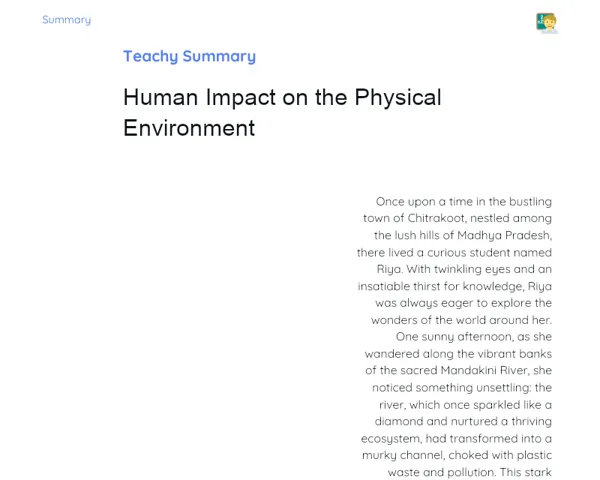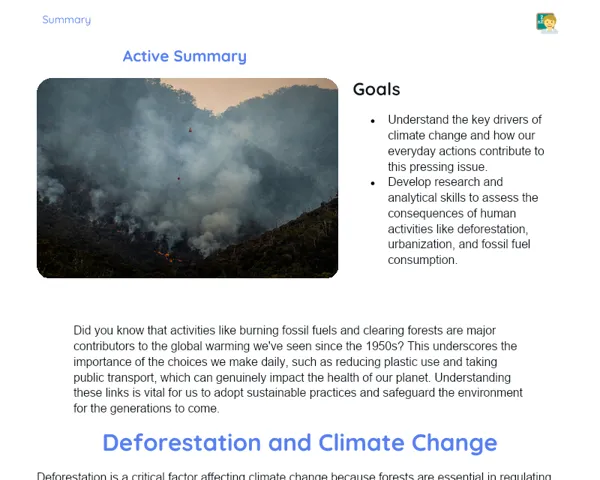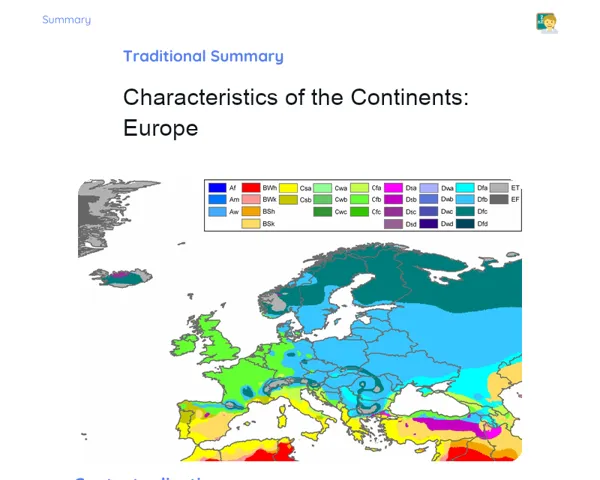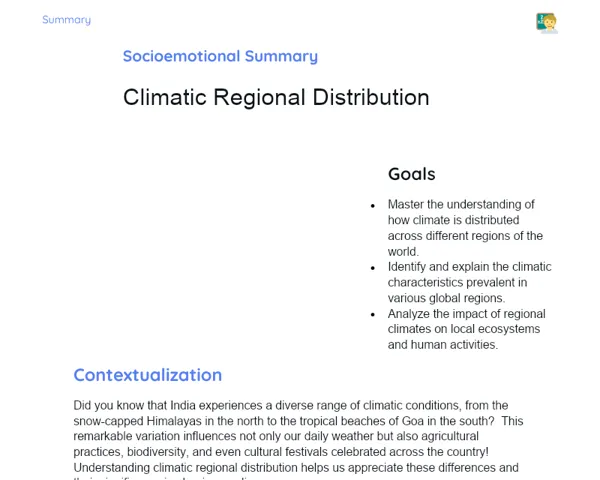Socioemotional Summary Conclusion
Goals
1. Grasp the connection between geography and mathematics when reading map scales.
2. Enhance the ability to interpret maps, including their scales, borders, and time zones.
Contextualization
Did you know that being able to read maps can greatly enhance your exploration skills? 🌍 Imagine planning a trip with accuracy, knowing the distances, and truly experiencing diverse cultures and time zones! Learning about map scales isn’t just about maps; it’s a skill that can pave the way for careers in fields like engineering, urban planning, and more. Are you ready for this exciting journey?
Exercising Your Knowledge
Definition of Map Scales
A map scale is an essential element in maps that helps us relate a distance on the map to its actual distance in the real world. For example, a scale of 1:100,000 means that every centimeter on the map equals 100,000 centimeters (or 1 kilometer) in reality. Understanding this is vital for accurately interpreting maps and creating precise plans.
-
Real-Measurement Relationship: Knowing that 1 cm on the map can signify a vast distance in reality aids us in planning trips and calculating distances correctly.
-
Practical Applications: Careers such as engineering, urban planning, and piloting depend on this skill for effective analyses and planning.
-
Spatial Awareness: This fosters a better appreciation of geography and the actual proportions of the world around us.
Types of Scales
Maps feature various types of scales, each tailored to represent the ratio of distances on the map to actual distances uniquely. The main types include graphic scale, numerical scale, and verbal scale.
-
Graphic Scale: A visual representation using a graphic line with real measurements, making it user-friendly.
-
Numerical Scale: Shown as a fraction or ratio (e.g., 1:50,000), it indicates how much reality has been condensed to fit the map.
-
Verbal Scale: Described in simple words, such as '1 cm stands for 1 km', making it straightforward for diverse audiences.
Interdisciplinary Connection with Mathematics
The intersection of geography and mathematics is crucial, especially with map scales. We apply concepts like proportions, multiplication, and division to transform measurements on the map to real-world measurements. Such calculations are vital for applying maps in our day-to-day lives.
-
Mathematical Proportion: The skill to apply proportions is essential for converting map measurements into real distances.
-
Mathematical Operations: Multiplication and division are key for computing these proportions, highlighting the significance of mathematics in geography.
-
Practical Application: Utilizing these skills in real-life scenarios, such as trip planning or comprehending the distance between locations, underscores the importance of mathematical knowledge in map analysis.
Key Terms
-
Map Scale
-
Graphic Scale
-
Numerical Scale
-
Verbal Scale
-
Proportion
-
Multiplication
-
Division
-
Borders
-
Time Zones
For Reflection
-
How do you think your skills in reading maps and understanding scales can assist you in your daily life and future career?
-
What feelings did you experience during the map-reading activity? How did you manage those emotions?
-
Consider a scenario where comprehending map scales is essential. How would you apply the concepts learned to navigate that situation?
Important Conclusions
-
Understanding map scales is key for accurately interpreting maps and applying this knowledge in practical scenarios, like planning trips and measuring distances.
-
The connection between geography and mathematics illustrates how mathematical concepts are crucial for effectively understanding and utilizing maps.
-
Being adept at reading maps and comprehending borders and time zones broadens our understanding of the world, fostering global awareness and empathy.
Impacts on Society
Today, the capability to read and interpret maps is an invaluable skill in numerous professions. Engineers, urban planners, scientists, and pilots rely on a clear understanding of map scales to execute their duties accurately and efficiently. Moreover, with the rise of technology and digital maps in navigation apps, grasping the concept of scales has become even more relevant and accessible in our daily lives. 🚀 On an emotional note, mastering maps and scales enables us to connect deeply with different cultures and regions globally. 🌐 Knowing how to read a map and understand geography can ignite curiosity and a spirit of exploration, urging us to learn more about the people and places that shape our world. This fosters empathy and social awareness, essential qualities for thriving in a globalized and interconnected environment. 💕
Dealing with Emotions
To effectively manage your emotions while learning about map scales, consider using the RULER method. First, Recognize your feelings when faced with a new challenge. Do you feel anxious, curious, or excited? Next, Understand the reason behind these emotions. It may stem from a fear of the unknown or the thrill of acquiring a useful skill. Label your emotions accurately: anxiety, enthusiasm, or frustration. Express your feelings appropriately, perhaps through discussions with peers or jotting down your thoughts in a journal. Finally, Regulate your emotions using techniques like deep breathing or taking breaks, which can help you maintain focus and motivation during your learning sessions. 💪
Study Tips
-
Create mind maps to visualize and interconnect the concepts of geography and mathematics. This approach aids memorization and enhances your comprehension of map scales.
-
Practice interpreting various types of maps (graphic, numerical, verbal) to familiarize yourself with the diverse ways of illustrating distances and proportions.
-
Explore digital map applications to investigate locations, calculate distances, and see how scales are applied in real-life scenarios. This establishes a practical and relevant link to your studies.



